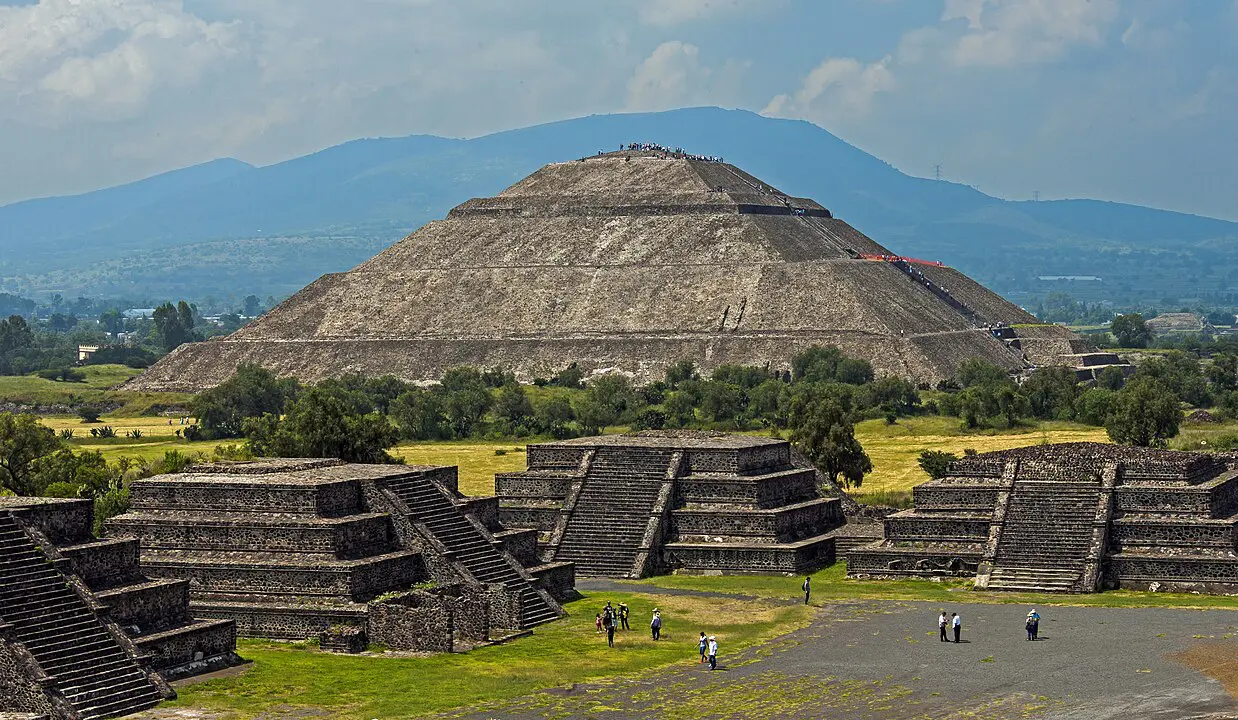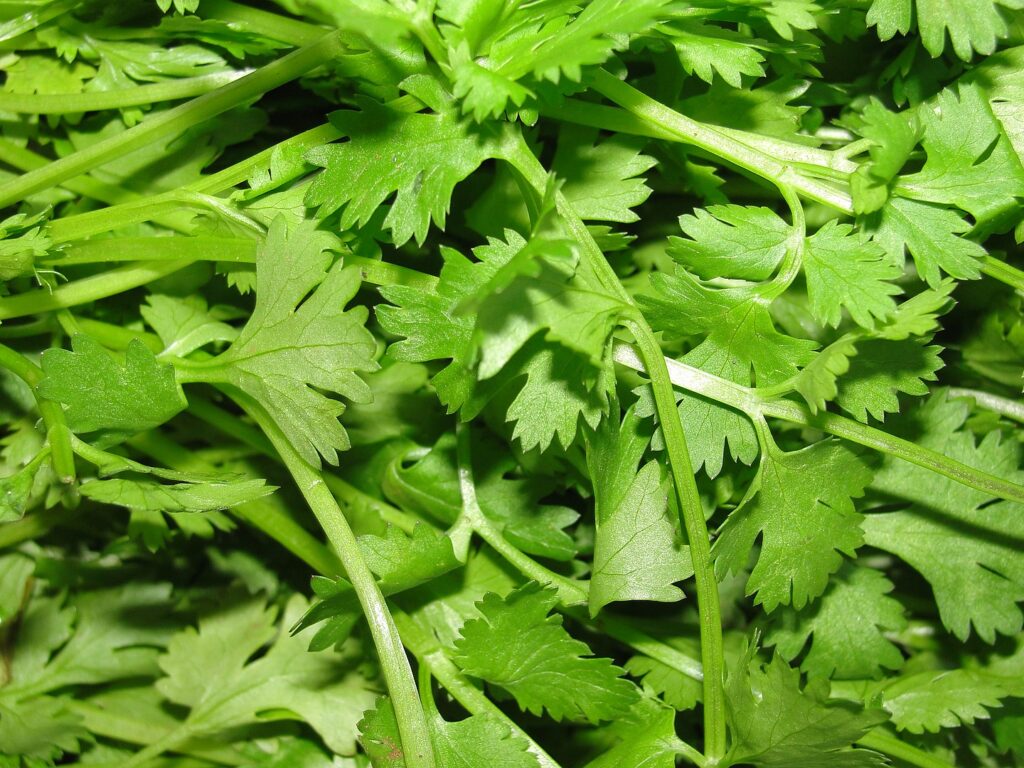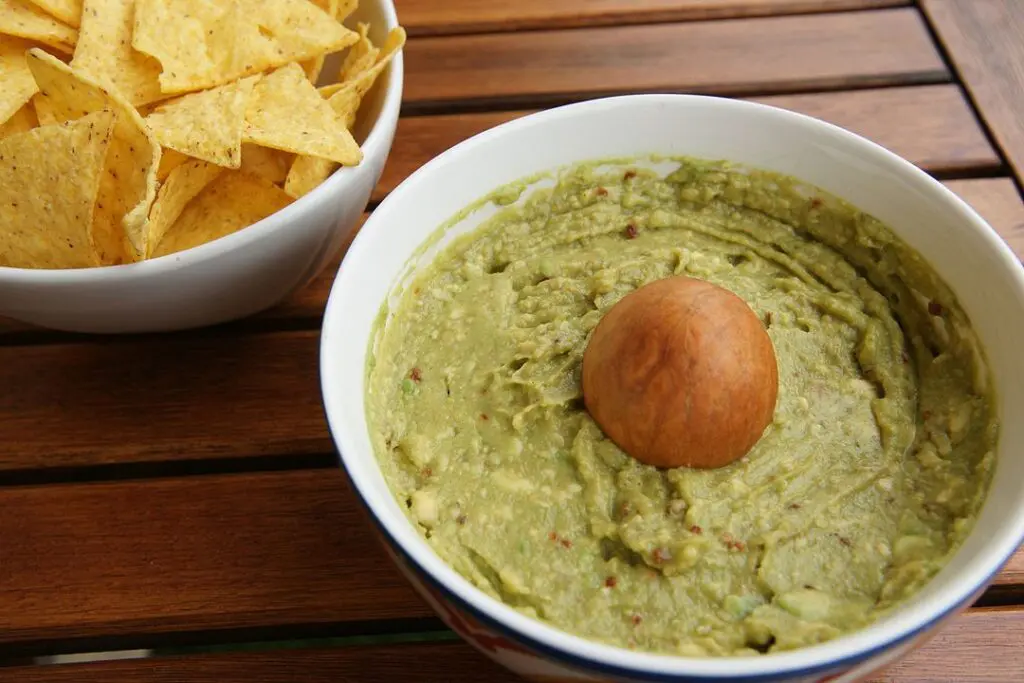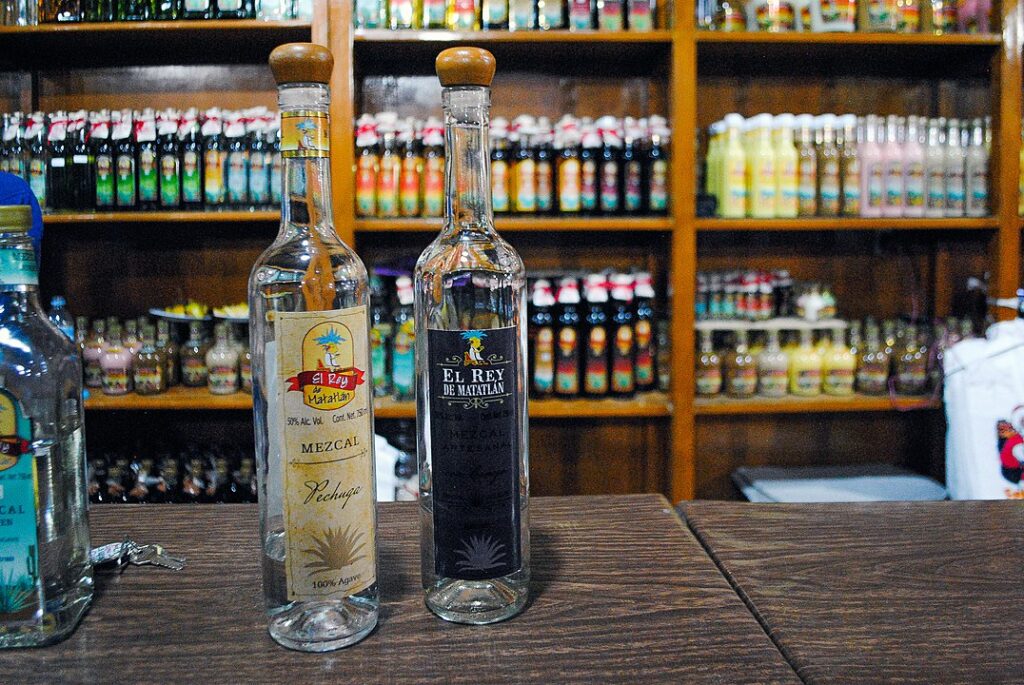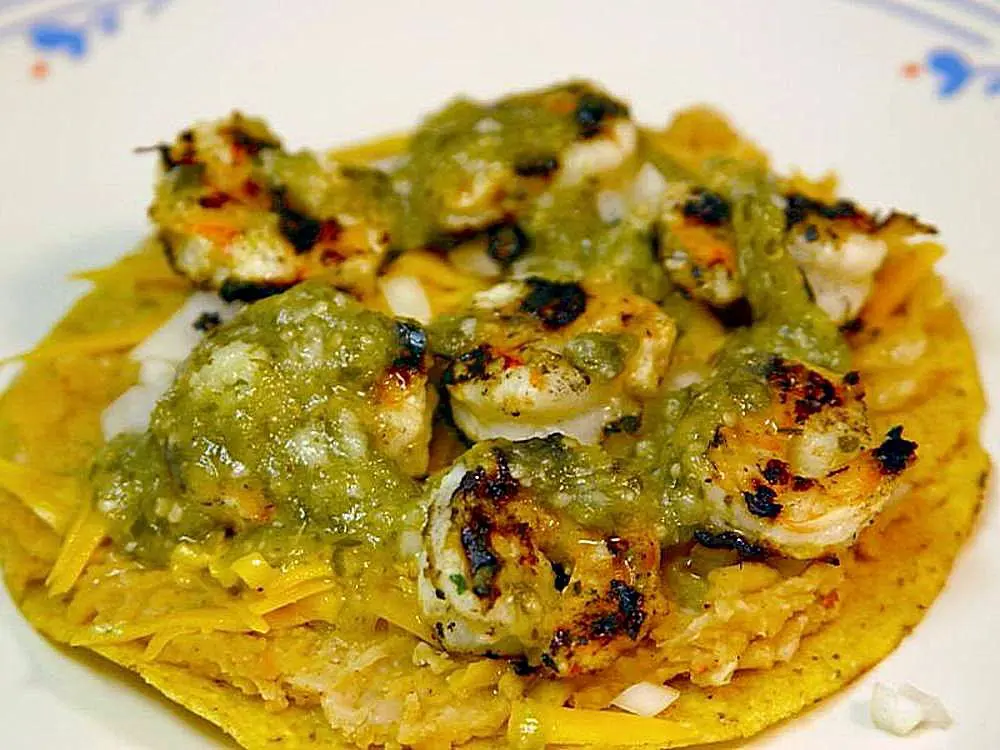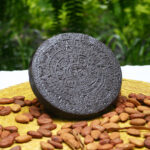Welcome to Mexican Food 101, where we will take you on a journey through the vibrant and delicious world of Mexican cuisine. From the bustling streets of Mexico City to the colorful towns of Oaxaca, Mexico has a rich culinary heritage that has influenced food culture all around the world. In this blog post, we will explore the history, ingredients, dishes, and traditions that make Mexican cuisine so unique and beloved.
If you plan on traveling to Mexico City and want to explore the foodie scene in the company of passionate local guides, consider joining us for one of our Food Tours in Mexico City.
A Brief History of Mexican Cuisine
Mexican cuisine has a long and fascinating history that spans thousands of years. It has been influenced by the indigenous people who lived in Mexico before the arrival of the Spanish conquistadors in the 16th century. These early inhabitants of Mexico, such as the Aztecs and Mayans, cultivated crops such as corn, beans, and chilies, which are still staples of Mexican cuisine today.
When the Spanish arrived, they brought with them ingredients such as beef, pork, and dairy products, as well as culinary techniques such as frying and baking. Over time, these ingredients and techniques merged with traditional Mexican ingredients and methods to create the rich and diverse cuisine that we know today.
The Importance of Mexican Cuisine in the World
Mexican cuisine has become increasingly popular worldwide thanks to its bold and complex flavors, a wide variety of ingredients, and rich cultural traditions. Mexican restaurants can now be found in almost every major city, and Mexican dishes such as tacos, guacamole, and salsa have become household favorites.
Mexican cuisine has also had a significant impact on other culinary cultures, particularly in the United States. Mexican-American cuisine, which blends Mexican flavors and techniques with American ingredients, has become a beloved part of American food culture.
Additionally, Mexican cuisine has inspired many chefs and home cooks to experiment with new ingredients and techniques, leading to a wave of exciting fusion cuisines.
In short, Mexican cuisine is a vital and beloved part of the culinary world, and we are excited to share its history, ingredients, and traditions with you in this blog post.
The Key Ingredients of Mexican Cuisine
Mexican cuisine is known for its bold and complex flavors, but many come from an expert blend of a handful of key ingredients.
Here are seven ingredients that are essential to Mexican cuisine:
Corn
Corn, or maize, is the most important crop in Mexican cuisine, and it has been cultivated in Mexico for thousands of years. Corn is used when making many traditional Mexican dishes, including tortillas, tamales, and pozole. It is also used to make masa, a dough that is used to make tortillas, tamales, and other dishes.
Calabaza (Squash)
Calabaza, or Mexican squash, holds great importance in Mexican cuisine due to its versatility and rich cultural significance. As a staple ingredient in numerous dishes, such as soups, stews, and desserts, calabaza adds a unique, earthy flavor and vibrant color that reflects the essence of Mexican culinary traditions.
Calabaza is particularly cherished in Mexican cuisine because it is native to the region, with its roots dating back to pre-Columbian times, making it an authentic and integral part of the country’s rich culinary heritage.
Chilies
Chilies are another essential ingredient in Mexican cuisine. They come in many varieties, from mild to extremely spicy, and they are used to add flavor and heat to dishes. Some of the most common chilies used in Mexican cuisine include jalapenos, serranos, and poblanos. Chilies are used in salsas, sauces, and marinades, and they are also used to season meat, poultry, and seafood.
Beans
Beans are a staple food in Mexican cuisine, and they are used in a variety of dishes, including soups, stews, and refried beans. The most common beans used in Mexican cuisine include black beans, pinto beans, and bayo beans.
Cilantro
Cilantro is a key ingredient in Mexican cuisine, adding a fresh, citrusy flavor to dishes such as salsas, guacamole, soups, and stews. Its pungent flavor, with citrus notes and a hint of pepper, is integral to many traditional Mexican dishes. It can be found in various forms, including fresh leaves, dried leaves (coriander), and toasted seeds.
Avocado
Avocado is a fruit that is native to Mexico, and it is an essential ingredient in many
Mexican dishes, including guacamole and tacos. Avocado is also used as a topping for soups and salads, and it is sometimes used as a filling for sandwiches and tortas.
Tomatoes
Tomatoes are used in a variety of Mexican dishes, including salsas, sauces, and stews. They are also used as a topping for tacos and other dishes. In addition to fresh tomatoes, canned tomatoes are also used in many Mexican dishes.
Additionally, Mexican cuisine also features a variety of other key ingredients, such as lime, garlic, onion, cheese, and a range of spices, such as cumin, oregano, and paprika. Each of these ingredients adds its unique flavor and texture to traditional Mexican dishes, resulting in a diverse and dynamic culinary experience.
From street food to high-end restaurants, Mexican cuisine offers a range of dishes to suit any taste and occasion – this is why it’s one of the most beloved and influential cuisines in the world.
Some Popular Mexican Dishes
Some popular Mexican dishes include tacos, enchiladas, guacamole, salsa, pozole, and mole. These dishes showcase the unique blend of ingredients and spices that are characteristic of Mexican cuisine and are beloved by foodies around the world.
Ceviche
This famous, refreshing seafood dish, is a vibrant combination of fresh fish or seafood marinated in citrus juices, typically lime, and mixed with tomatoes, onions, and cilantro. Its zesty flavors and light, satisfying texture make it a popular choice for warm days and coastal regions.
Barbacoa
Barbacoa is a slow-cooked meat dish with a tender, melt-in-your-mouth texture and rich, smoky flavors. It is traditionally prepared in a pit oven, this dish is often made with lamb, goat, or beef, and its savory taste has garnered fans across Mexico and beyond.
Birria
A flavorful stew originating from the state of Jalisco, Birria is adored for its rich, spicy broth and tender meat, typically goat or beef. The combination of dried chilies and spices creates a deliciously complex flavor profile, making Birria a popular choice for festive occasions and family gatherings.
Fish Zarandeado
This popular dish from the Pacific coast of Mexico is popular for its smoky, grilled flavors and tender, flaky textures. Marinated in spices and chilies, the fish is traditionally grilled over an open flame, giving a unique, irresistible taste that has earned it a special place in Mexican cuisine.
Cochinita Pibil
A Yucatecan specialty, Cochinita Pibil is known for its succulent, slow-roasted pork marinated in a tangy blend of citrus and achiote paste. The dish’s vibrant red hue and aromatic, earthy flavors have made it a celebrated favorite, with its popularity extending far beyond the Yucatan Peninsula.
Tacos
Tacos are a beloved Mexican dish that consists of a tortilla filled with a variety of meats, vegetables, and toppings. The most popular types of tacos include carne asada (grilled beef), al pastor (marinated pork), and pollo (chicken), but there are countless variations to choose from. Tacos are often served with various toppings such as cilantro, onions, and salsa.
Enchiladas
Enchiladas are another popular Mexican dish that consists of tortillas filled with meat, cheese, or chicken and topped with chili sauce and cheese. The tortillas are rolled up and then baked in the oven until the cheese is melted and bubbly. Enchiladas can be served with many toppings, including sour cream, guacamole, oninons, and chopped cilantro.
Guacamole
Guacamole is a classic Mexican dip made from mashed avocados, lime juice, salt, and a variety of other ingredients, such as onion, cilantro, and tomato. It is often served with tortilla chips as an appetizer, but it can also be used as a topping for tacos and other dishes.
However, its worth noting that you won’t always find guacamole in restaurants in Mexico – this is a dish we typically prepare at home.
Salsa
Salsa is a spicy Mexican sauce made from tomatoes, onions, chilies, and a variety of other ingredients. This condiment is used as a topping for tacos, enchiladas, and other dishes. Salsa comes in many varieties, from mild to extremely spicy, and each type adds its unique flavor and heat to any dish.
Pozole
Pozole is a traditional Mexican soup made from hominy (dried corn kernels), meat (usually pork), and various seasonings such as garlic, onion, and chili powder. It is often served with a variety of toppings, including shredded cabbage, chopped onions, and lime wedges.
Mole
Mole is a rich and complex Mexican sauce made from spices, chili peppers, and chocolate. It is often served with chicken or pork and is a staple dish during special occasions such as weddings and holidays. Mole comes in many varieties, each with its unique flavor profile, and it is considered one of the quintessential dishes in Mexican cuisine.
Mexico’s Major Food Regions
There’s an immense amount of diversity in Mexican cuisine, with individual cities, towns, and villages often possessing their own specialty dishes or produce. Below we discuss some of the most noticeable variations in cooking across regions of the country.
Northern Mexico
The cuisine of northern Mexico is heavily influenced by its proximity to the United States and the ranching culture of the region. Popular dishes include grilled meats, especially beef and goat, flour tortillas, and cheese. Northern Mexico is also known for its use of spicy salsas and smoked chili peppers in dishes such as carne asada and cabrito (roasted goat).
Central Mexico
Central Mexico has some of the most iconic Mexican dishes, including tacos al pastor, chiles en nogada, and mole poblano. The cuisine of this region is characterized by the use of corn tortillas, fresh herbs such as cilantro and epazote, and a variety of peppers such as poblano, guajillo, chipotle, and ancho. Central Mexico is also known for using indigenous ingredients such as huitlacoche (corn fungus), quelites, and nopales (cactus).
Southern Mexico
The cuisine of southern Mexico is heavily influenced by its indigenous roots, with a focus on corn, beans, and squash. This region is known for its complex and flavorful moles, such as mole negro and mole amarillo, as well as tamales and the famous dish of Oaxaca, tlayudas (large tortillas topped with beans, cheese, and a variety of meats and vegetables). The use of tropical fruits such as pineapple and plantains is also prevalent in Southern Mexican cuisine, adding a sweet and tangy flavor to many dishes.
Famous Mexican Drinks
In addition to delicious cooking, Mexico also has its fair share of iconic drinks. Below we discuss some of the most widely recognized drinks from Mexico.
Tequila
Tequila is a distilled spirit made from the blue agave plant and is considered the national drink of Mexico. It is typically consumed as a shot with a lick of salt,a squeeze of limej, and sangrita (tomato juice, salsas, pepper, orange juice), but it can also be used in cocktails such as margaritas and palomas.
Mezcal
Mezcal is a distilled spirit similar to tequila but made from various agave plants. It has a smoky flavor and is often consumed neat or in cocktails like the mezcalita.
Horchata
Horchata is a refreshing drink from rice, water, cinnamon, and sugar. It is often served over ice and is a popular beverage during the summer months.
Agua Fresca
Agua fresca is a refreshing drink blending fresh fruit with water and sugar. Popular flavors include hibiscus, watermelon, cantaloupe, and tamarind. It is often served over ice and is a popular drink during the summer months.
Popular Mexican Street Foods
Another element of Mexican food that the traveler will want to learn about is street food! Some of the country’s most delicious foods are affordable street foods perfect for casual dining. We pick some of our favorites.
And remember, if you’re in Mexico City and want to explore street food with expert guides, book a place on one of our Mexico City Historic Center Food Tours.
Tamales
Tamales are a traditional Mexican street food made of masa (corn dough) filled with various meats, vegetables, or cheeses and wrapped in a corn husk before being steamed. They are often sold by street vendors and are a popular breakfast food in Mexico. Tamales are special because of their versatility, with countless variations depending on the filling and the region of Mexico.
Elote
Elote is a popular Mexican street food that consists of grilled corn on the cob that is slathered with mayonnaise, cotija cheese, and chili powder. It is a popular snack and is known for its combination of sweet and savory flavors.
Tostadas
Tostadas are a type of Mexican street food that consists of a crispy tortilla that is piled high with various toppings such as beans, meat, lettuce, cheese, and salsa. They are often served as a light lunch or snack and are special because of their crunchy texture and endless variations of toppings.
Churros
Churros are a classic Mexican street food that consists of fried dough pastry that is dusted with cinnamon and sugar. They are typically served with hot chocolate or dulce de leche for dipping. Churros are special because of their crispy texture and sweet, indulgent flavor. They are a popular dessert food in Mexico and are often sold by street vendors in the late afternoon and evening.
Mexican Desserts
Famous Mexican desserts are known for their indulgent sweetness and unique flavors. One of the most iconic Mexican desserts is flan, a creamy and caramelized custard that is typically made with eggs, sugar, and milk.
Another popular dessert is tres leches cake, a light and airy sponge cake soaked in a mixture of three types of milk and topped with whipped cream and fresh fruit. Mexican desserts also often incorporate traditional ingredients such as cinnamon, vanilla, and chocolate, which add a rich and complex flavor to the sweet treats.
Mexican chocolate is known for its distinct taste and texture. Unlike traditional chocolate, Mexican chocolate is made from roasted and ground cacao beans mixed with sugar, cinnamon, and sometimes other spices such as nutmeg or chili pepper. This unique blend of ingredients gives Mexican chocolate its characteristic flavor, rich and slightly spicy with a hint of sweetness.
Mexican chocolate is commonly used in traditional Mexican desserts, such as mole, a savory sauce that is often served with meat or vegetables, and hot chocolate, a rich and indulgent beverage that is enjoyed throughout Mexico.
Mexican chocolate is also used in a variety of other applications, such as in baking and cooking, and is beloved by chocolate lovers around the world for its complex and delicious flavor. Learn more about Mexican chocolate on our Friends & Chocolate tour.
Mexican Food Traditions and Etiquette
Mexican culinary culture and etiquette are deeply rooted in tradition and are an important aspect of Mexican social life. In Mexican culture, food is often shared among family and friends, and communal dining is common. It is customary for dishes to be passed around the table and for everyone to help themselves to what they want. Sharing food is a way to show hospitality and generosity, and it is a way to bring people together.
Family gatherings are an integral part of Mexican culinary culture. Many traditional Mexican dishes are labor-intensive and require much time and effort to prepare, so they are often served during family gatherings and special occasions. Family gatherings are an opportunity to share a meal, catch up with loved ones, and enjoy the company of family and friends. In Mexican culture, family is everything, and meals are a time to connect and share stories.
Mexicans love to celebrate, and food is an essential part of any celebration or festival. From Dia de los Muertos to Mother’s Day, there are many festivals and holidays that are celebrated with food. Festivals are a time to indulge in traditional dishes, enjoy music and dance, and connect with the community. Mexican culinary culture and etiquette are deeply intertwined with Mexican social life, and it is through food that Mexicans express their cultural identity and tradition.
Dive Into Mexican Cuisine
Mexican cuisine is a vibrant and diverse culinary tradition that is beloved worldwide. From the use of flavorful ingredients like chilies, avocados, and cilantro to the preparation of classic dishes like tacos, enchiladas, and guacamole, Mexican cuisine is a celebration of flavor and culture.
The importance of food in Mexican culture is reflected in how meals are shared, in the emphasis on family gatherings and celebrations, and the deep cultural significance of traditional dishes and ingredients. Whether you’re a seasoned foodie or a curious traveler, exploring Mexican cuisine is an exciting and delicious adventure that will leave a lasting impression.
If you have any questions, please get in touch.

